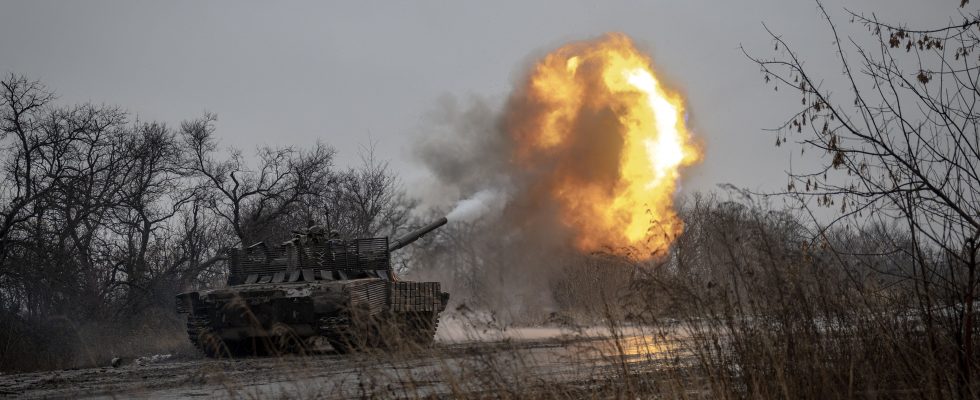For Ukrainians, the year 2024 began like the previous one: under a rain of bombs. At a time when many Europeans were celebrating New Year’s Eve, Moscow launched an armada of 90 Shahed explosive drones towards their countries, a record. Just two days earlier, Russian missile strikes killed at least 55 people, including 32 in kyiv – the deadliest bombing to date in the Ukrainian capital. After almost two years of war, Vladimir Putin seems more determined than ever to continue his murderous invasion of Ukraine.
The failure of the Ukrainian counter-offensive launched in June cheered Moscow. Despite the equipment delivered by the West, kyiv’s forces did not manage to deeply penetrate its defenses. Worse, in the east of the country, Russian troops have now even regained the initiative. Since the beginning of October, they have relaunched their efforts to encircle the town of Avdiivka, an industrial city in the Donetsk region, transformed since 2014 into a stronghold bordering the front line. About thirty kilometers further south, the Russian army also claimed the capture of the small town of Marinka at the end of December – reduced to ashes after months of fighting.
And she doesn’t intend to stop there, attempting new breakthroughs. “We can expect that in 2024 the Russians will try to get out of the positional war that has been in place for more than a year, gauges General Christophe Gomart, former director of French military intelligence. They have moved to an economy of war and mobilized their defense industry to meet the needs of this conflict.” With a total budget of $109 billion, defense spending is expected to represent nearly a third of the Russian state budget in 2024.
Indispensable support from allies
On the other hand, bad news keeps coming for the Ukrainians. In Europe, the leaders of the Twenty-Seven have so far failed to agree on an envelope of 50 billion euros for kyiv, after the veto in mid-December by Hungarian populist leader Viktor Orban. And on the other side of the Atlantic, the American Congress has still not managed to validate the additional 60 billion dollars requested by Joe Biden to continue to support kyiv. At the risk of stopping arms deliveries: at the beginning of January, the spokesperson for the National Security Council, John Kirby, admitted that the United States had exhausted, on December 27, the last funds having been voted for Ukraine.
In the longer term, the hypothesis of Donald Trump being elected in the American presidential election next November poses an enormous threat. on Washington’s commitment. “If American aid stops, Europe will certainly continue to provide support, but given the capabilities of our defense industry, I fear that this will not be enough,” points out Katarzyna Zysk, professor at the Norwegian Institute for Defense Studies. This raises questions about the need for Europeans to increase production.”
Western aid flows are already becoming more disparate. Between August and October 2023, new pledges of support fell by 87%, compared to the same period a year earlier, underlines a study by the Kiel Institute. There is danger. “If Western support dries up, it will become complicated for the Ukrainians to continue to resist, insists Tomas Ries, professor at the Higher School of National Defense in Stockholm. We could therefore witness local and progressive advances in the “Russian army on certain sectors of the front.”
Especially since at the same time, Moscow has found international support. Beyond Iran’s support for drones, Russia has recently received “ballistic missile launch systems and several missiles” from North Korea, Washington warned on January 5. At the beginning of November, Seoul also claimed that Pyongyang had already transferred more than a million shells to its Russian neighbor, in exchange for technical advice for its satellites. In 2024, more than ever, help from its allies will be a vital issue for Ukraine.
.
